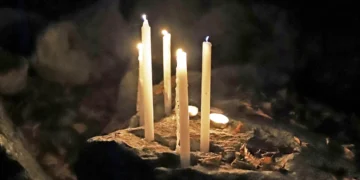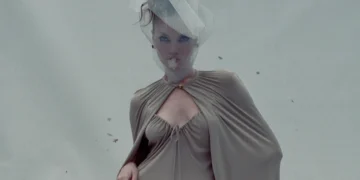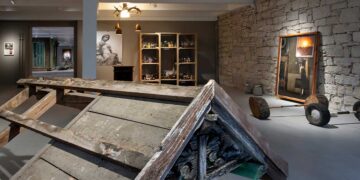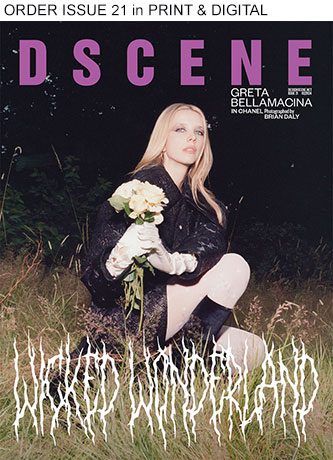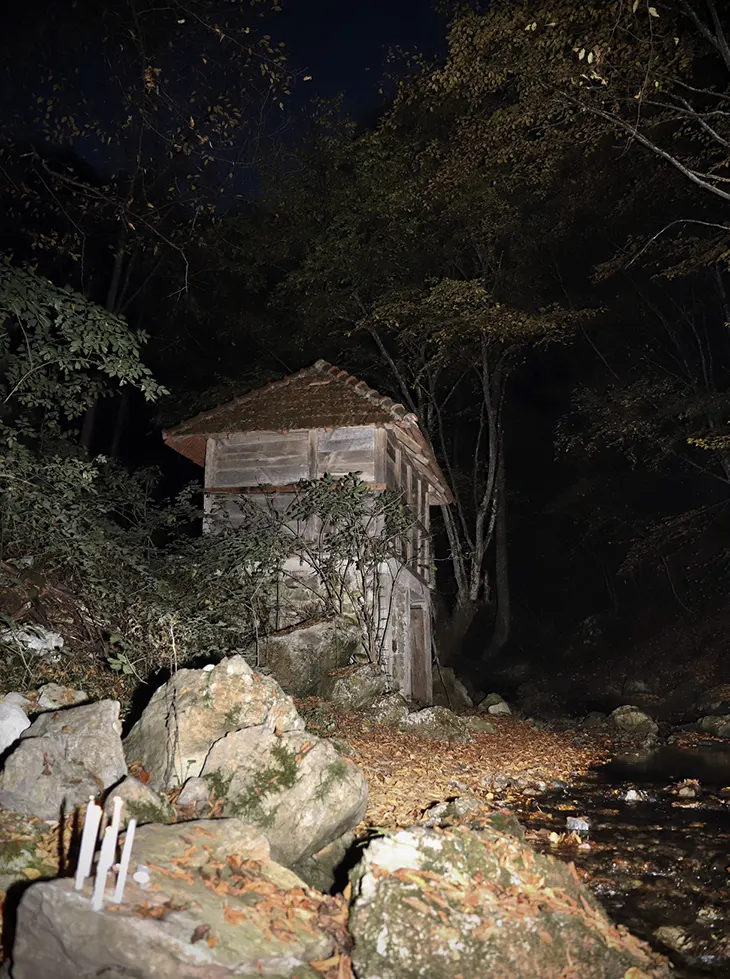
There’s something haunting about places where myth meets reality, where the shadows of folklore stretch into the present day. When we heard about the mill of Sava Savanovic, a name that still sends shivers down the spine, we knew we had to see it for ourselves. Situated in the remote village of Zarozje, the mill is the epicenter of one of Serbia’s most persistent vampire stories.
PRE-ORDER IN PRINT AND DIGITAL
It was a crisp, sun-soaked October morning when we left the city behind, the road unfolding through landscapes painted in autumn hues. The journey felt almost surreal, the kind of day that lulls you into a sense of calm. But as we veered off the main road onto a narrow, downhill dirt path, that tranquility began to wane. The asphalt gave way to soil, and the trees closed in around us.
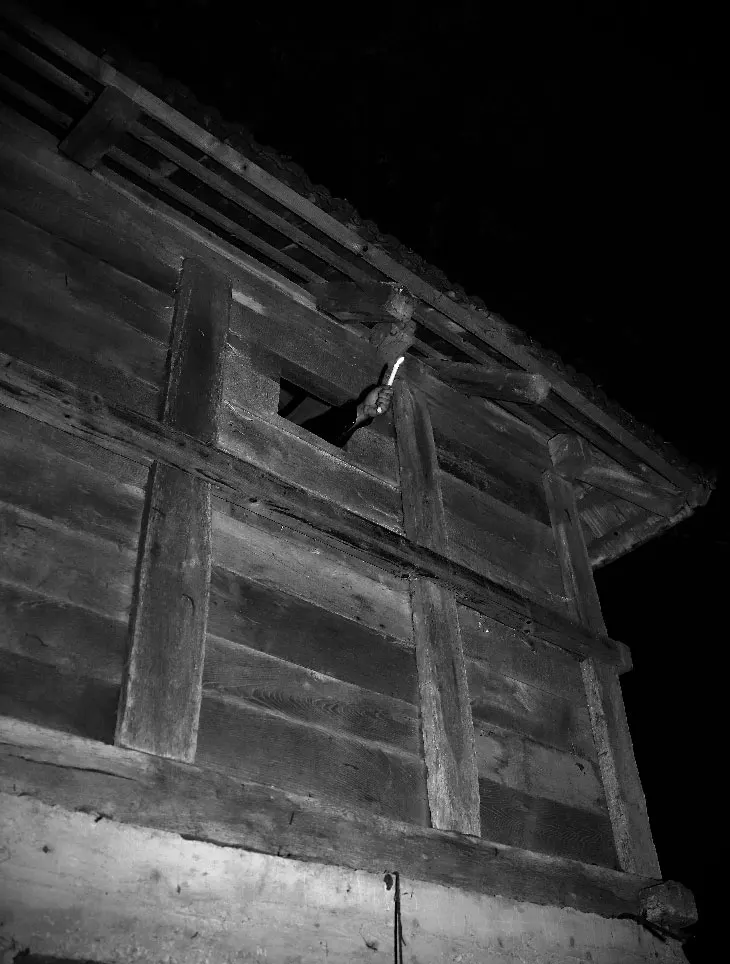
We passed by skeletal remains of old houses, their walls crumbling but stubbornly standing, a testament to forgotten lives. Two ancient churches loomed by the roadside, their graveyards spilling over with weathered tombstones that leaned and buckled under the weight of time. The atmosphere thickened; the air seemed to hold its breath.
The word “vampire” originates from the Serbian word “vampir”(вампир), a rare Serbian term that entered the Western lexicon during the early 18th century.
Arriving at the mill during daylight, it was almost deceptively picturesque. Set against the backdrop of dense woods along the Rogacica River, the mill stood beside cascading waterfalls that played a gentle symphony. Sunlight filtered through the canopy, casting dappled patterns on the moss-covered stones. Yet beneath the surface beauty, there was an undercurrent of something unsettling, a lingering energy that made the hairs on the back of your neck stand up.
We wandered around, cameras in hand, trying to capture the essence of this place where reality and legend intertwine. The mill had collapsed years ago but had recently been restored, its renewed structure both inviting and foreboding. As we explored, we couldn’t shake the feeling that we were intruding on something ancient, something that preferred to remain undisturbed.
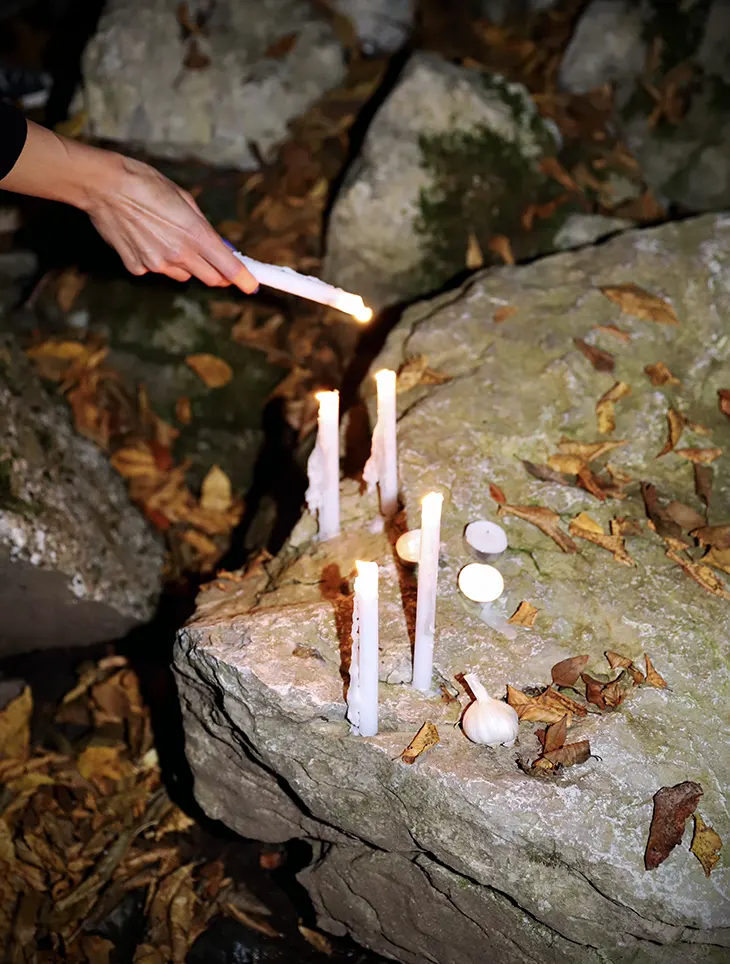
Hunger eventually pulled us back to the village, where we found a small tavern that seemed as old as the stories themselves. The walls were adorned with faded photographs and traditional embroidery, a collage of memories frozen in time. The scent of hearty, home-cooked food filled the air, a comforting contrast to the unsettling aura of the mill.
It wasn’t long before the locals, curious about our presence, struck up a conversation. An elderly man leaned over from the next table.
“You’re not from around here,” he said, a statement rather than a question.
“We visited Sava’s mill,” we replied.
“They say Sava Savanovic still lurks there, you know. Not all spirits rest easy.” Others chimed in, sharing tales passed down through generations.
A woman with a scarf tied tightly around her head recounted, “My grandmother told me to never stay near the mill after dark. Strange sounds, shadows that move on their own – it’s no place for the living at night.”
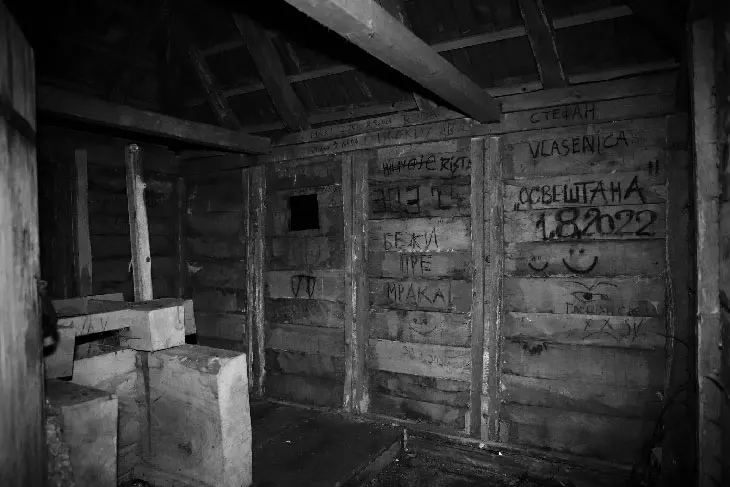
Another man, younger, perhaps in his thirties, chuckled nervously. “They say the mill is cursed,” he added. “Equipment fails, people feel watched. Some even claim to see shadows moving among the trees.”
We pressed them for more. Petar sighed, his gaze distant.
“Sava Savanovic was once a miller, or so the story goes. But after his death, he became something else, a vampire. He haunted that mill, attacking anyone who dared to grind grain at night. For generations, parents warned their children to stay away, especially after sunset.”
The women nodded. “My grandmother used to tell me about the screams people heard, the bodies found drained of blood. It’s not just a story to us; it’s a warning.”
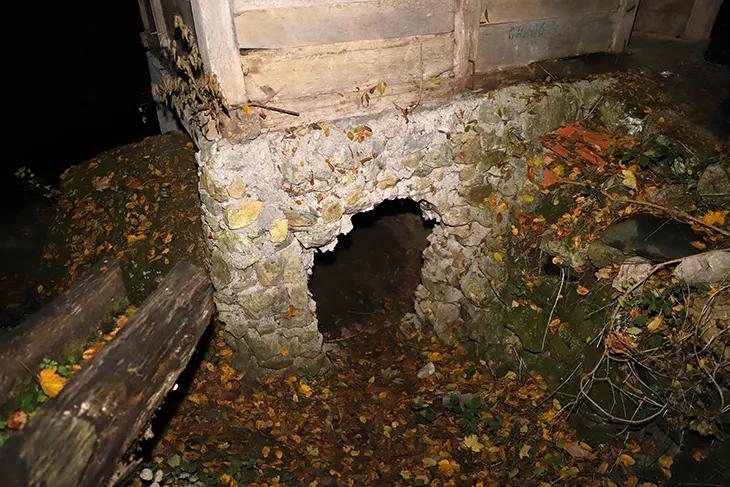
Intrigued and admittedly unsettled, we realized we had lost track of time. The seasonal clock change meant the sun would set earlier, and we wanted to capture more footage. Thanking the locals, we headed back to the mill, the weight of their stories lingering in our minds.
The drive back felt different. The sun dipped lower, casting long shadows that stretched across the landscape like reaching fingers. The woods, vibrant in the afternoon light, now took on a more sinister hue. By the time we arrived, dusk had settled, and the mill stood cloaked in an eerie twilight.
Even the waterfalls seemed muted. As we ventured inside the mill, a chill enveloped us. The interior was dim, our flashlights cutting through the darkness in narrow beams.
Setting up our equipment, we noticed the silence, a stark contrast to the lively sounds from earlier in the day. Even the waterfalls seemed muted. As we ventured inside, a chill wrapped around us. The interior was dim, our flashlights cutting through the darkness in narrow beams. On one of the wooden beams, we spotted something carved into the surface. Leaning closer, we traced the Serbian Cyrillic letters: “БЕЖИ ПРЕ МРАКА” (Run before the dark). The warning sent a jolt through us, a tangible manifestation of the fear that had surrounded this place for centuries.
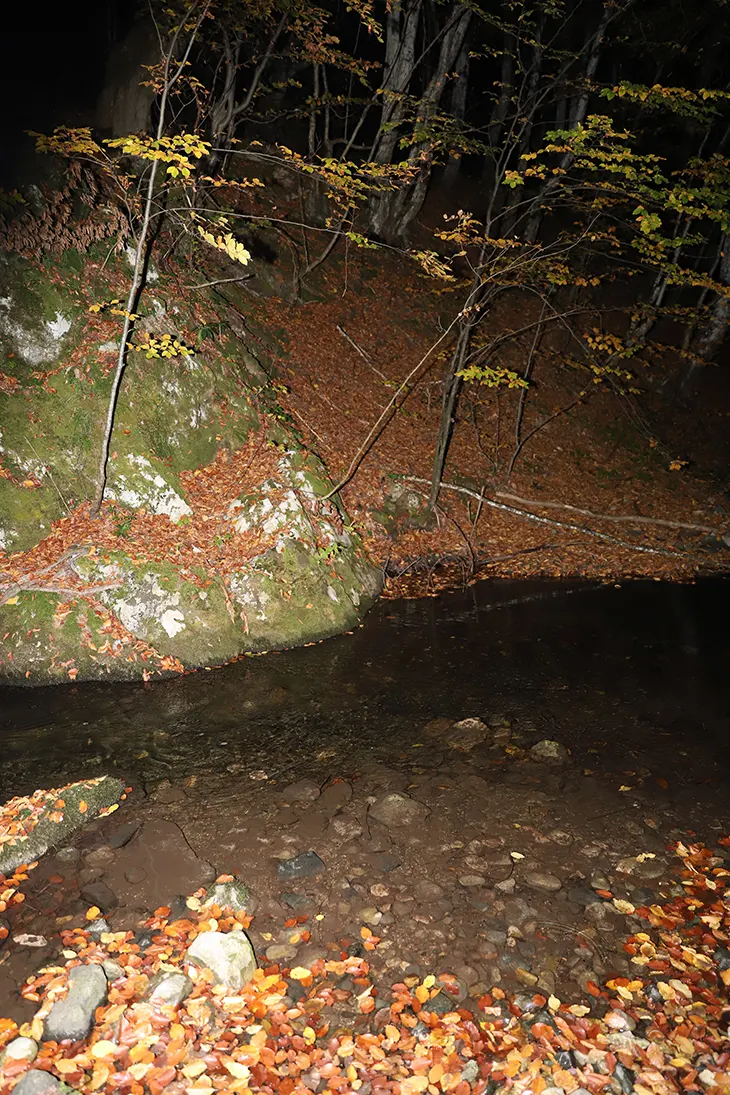
A faint rustling broke the silence, like footsteps shuffling across the wooden floor. We froze, exchanging glances that confirmed our shared unease. The air grew dense, almost stifling, and every instinct urged us to leave. We hurriedly packed up, the urgency undeniable.
Stepping outside, we found that night had fully descended. The path back was engulfed in darkness, the trees twisting into grotesque shapes in the shadows. As we made our way to the car, a large owl swooped overhead, its wings cutting through the air with a soft whoosh. Its eyes flashed in the dim light, piercing and unblinking.
Moments later, a rabbit darted onto the path, erratic and frantic, as if fleeing from something unseen. Back in the car, as we tried to shake off the tension, a fluttering caught our attention. A butterfly rested on the dashboard, its wings patterned with intricate designs that seemed almost unnatural in their perfection.
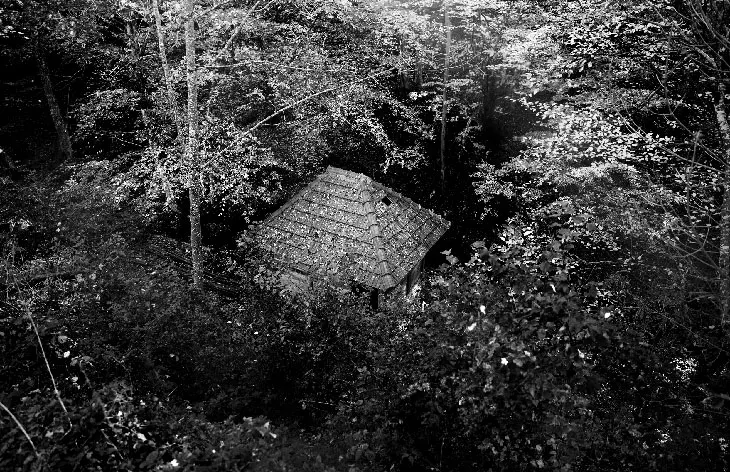
In Serbian folklore, butterflies hold deep significance. They are often seen as carriers of souls, and in the context of the story “Leptirica” (The She-Butterfly), they symbolize vampires. Leptirica is a 1973 Serbian horror film that explores these myths, based on Milovan Glišic’s 19th-century story “Posle Devedeset Godina” (After Ninety Years). The film portrays a village terrorized by a vampire, none other than Sava Savanovic, who preys on millers at his old mill. The butterfly motif underscores the transformation and elusive nature of the vampire, a creature that is both alluring and deadly.
Its eyes flashed in the dim light, piercing and unblinking.
Sava Savanovic isn’t just a character from a film or a tale whispered to frighten children. He is one of Serbia’s most enduring vampire legends, predating even Bram Stoker’s Dracula. Unlike the aristocratic vampires of Western lore, Sava Savanovic is a creature born from rural hardships and fears. He embodies the unknown lurking in familiar places, the terror that arises from within one’s own community.
Milovan Glišic’s After Ninety Years captures this essence brilliantly. Written in the late 19th century, it reflects the superstitions and societal anxieties of the time. The story weaves together elements of folklore and the grim realities of rural life, painting a picture of a community grappling with inexplicable events. Glišic’s work is seminal, one of the earliest literary pieces to explore the vampire mythos, and it laid the foundation for how these creatures are perceived in Serbian culture.
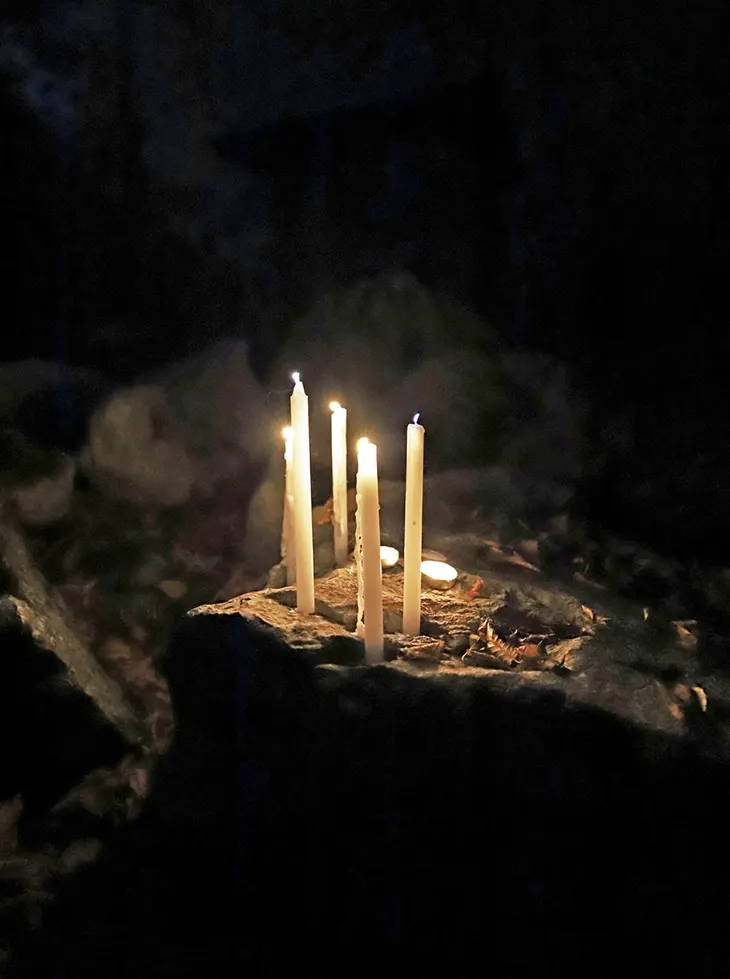
The very word “vampire” has roots in the Serbian “vampir,” a term that entered the English lexicon in the early 18th century amid a wave of vampire hysteria sweeping through Eastern Europe. These stories were a means to explain the unexplainable, to give shape to the fears that lurked in the darkness. Serbian folklore is rich with such tales, mixing pagan traditions with Christian beliefs, creating a complex web of myths that have both fascinated and terrified for generations.
As we drove away from Zarozje, the weight of these stories pressed upon us. The events of the day replayed in our minds, the malfunctioning equipment, the cryptic warning, the unsettling encounters with wildlife. It felt as though we had stepped into the pages of Glišic’s tale, or perhaps into a scene from Leptirica itself.
Back in the city, surrounded by the comforting hum of modern life, the experience already seemed surreal. Yet a part of us couldn’t shake the lingering unease. Our journey was supposed to be a simple exploration of folklore, a chance to document a piece of Serbian heritage. Instead, it became an intense encounter with the unknown, a reminder that some stories refuse to stay buried.
Words by Katarina Doric
Photography Borislav Utjesinovic
Vampire Hunters Vuk Cuk and Violante Buonocore
Originally published in DSCENE Magazine‘s “Wicked Wonderland” print issue.

